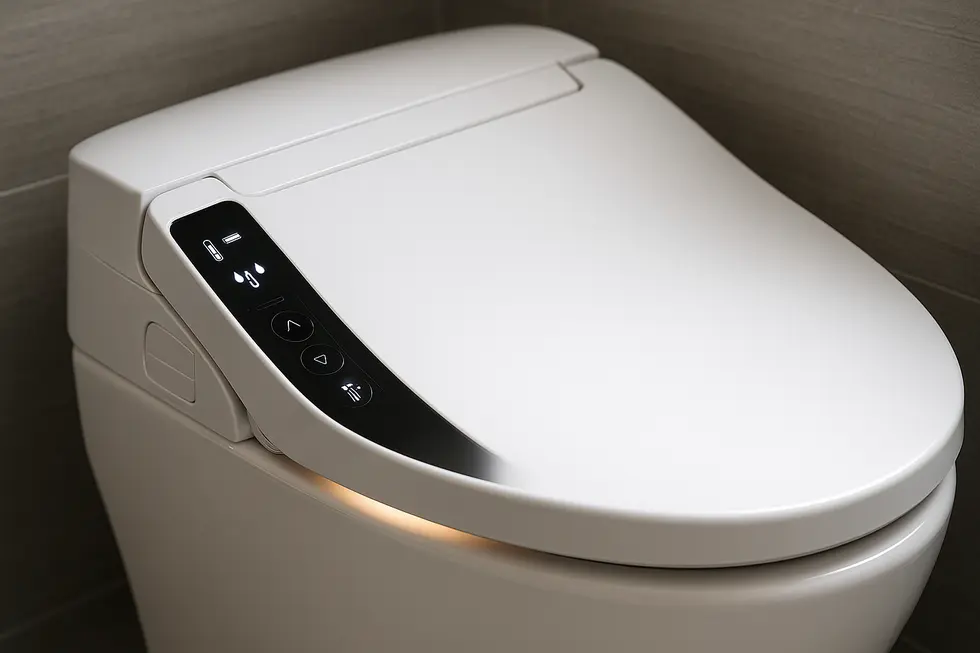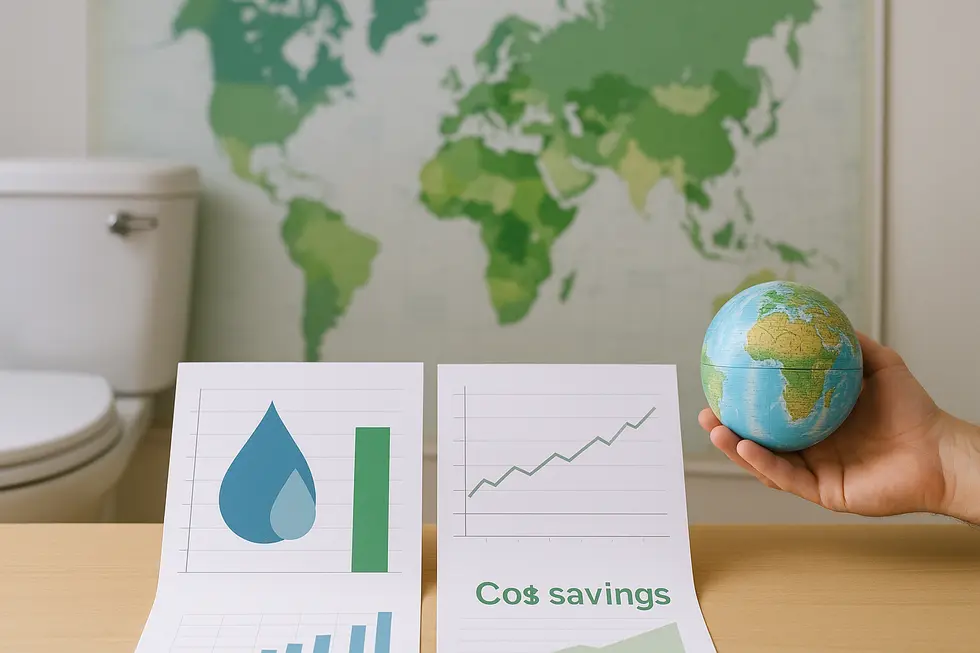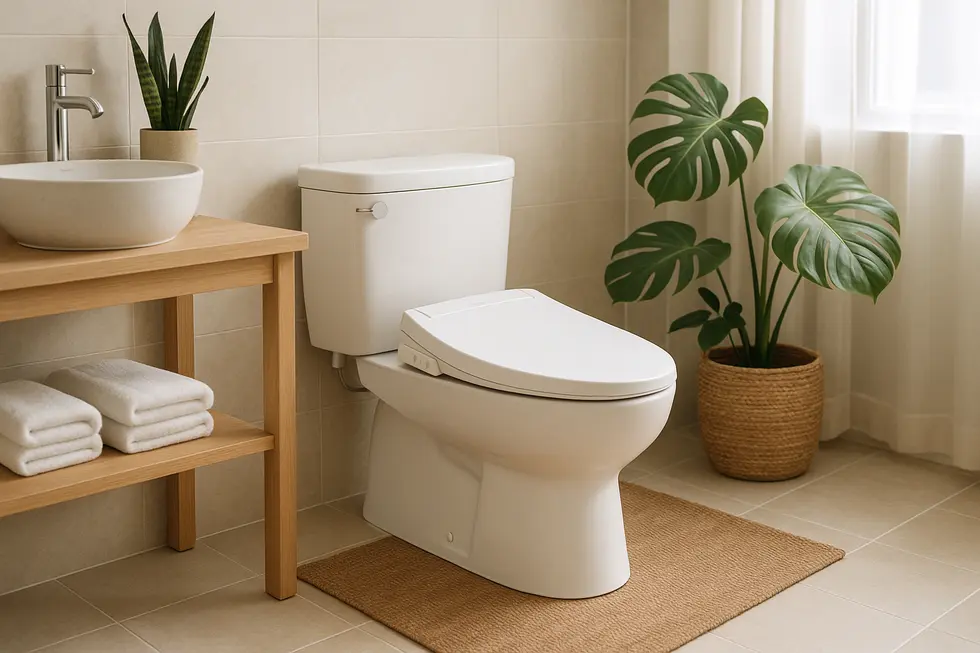Bidet Attachment, Bidet Seat, Handheld Bidet, Portable Bidet
Embracing Clean: The Rise of Water-Saving Bidets in Modern Households
The quest for improved hygiene and environmental consciousness has led families worldwide to explore innovative domestic solutions. Among them, water-saving bidets stand out as an efficient, eco-friendly alternative to traditional toilet systems. By harnessing advanced technology, these bidets not only enhance personal hygiene but also contribute to significant water conservation and reduced reliance on toilet paper. Throughout this article, we delve into the technological advancements shaping bidet designs, the worldwide economic and environmental impacts of their adoption, and the holistic societal and hygiene benefits they offer. Each chapter builds on the overarching narrative of sustainability, comfort, and efficiency in modern sanitation.
From Dual-Flush Brains to Bubble-Wash Bliss: Engineering the Modern Water-Saving Bidet

Conserving every drop starts in the bowl. The newest generation of water-saving bidets approaches the toilet not as simple plumbing, but as an intelligent appliance that orchestrates flow, temperature, and pressure with micro-second precision. At the heart of most designs sits a dual-flush valve: one path releases barely more than a liter for liquid waste, while the other delivers a still-conservative surge for solids. By giving users a deliberate choice, manufacturers cut annual household water use by thousands of gallons without sacrificing reliability.
Tankless heating modules deepen that conservation mindset. Instead of storing warm water, compact coils heat only what the spray requires, so standby energy loss disappears. A thermostatic sensor keeps the stream within a narrow comfort zone, allowing colder inlet water in winter without an extra flush to “warm the pipes.”
Hygiene enhancements complement the lean hydraulics. A pre-mist atomizer coats porcelain before the seat is even warmed, making residue far less likely to cling and reducing the number of follow-up flushes. Some bowls now generate an airy foam shield; the bubbles dampen splash, trap odor molecules, and help waste slide away on the first flush. When the user stands, infrared sensors trigger an auto-flush calibrated to load, so no one double-flushes “just in case.”
Comfort features are tuned with the same efficiency ethic. Pulsating or oscillating spray patterns clean more surface area in fewer seconds, while bubble-wash technology infuses air so pressure feels gentler yet remains effective. Warm-air dryers, sequenced to engage only after moisture sensors detect minimal residual water, replace entire rolls of paper.
Design integration rounds out the package. Rimless bowls and wall-hung frames leave fewer crevices to scrub, translating to fewer cleaning chemicals down the drain. Remote controls, ADA-compliant seating heights, and soft self-closing lids ensure that sustainability never feels like a compromise—an insight explored further in the environmental benefits of bidet toilets.
For readers comparing certifications, this WaterSense-certified smart unit exemplifies how thoughtful engineering can deliver luxurious hygiene while honoring water as a finite resource.
From Bathroom Luxury to Global Game-Changer: The Economic and Environmental Ripple of Water-Saving Bidets

When a household swaps toilet paper and high-flow toilets for a water-saving bidet, the difference feels personal—cleaner skin, lower bills—but the aggregate impact is macro-economic and ecological. Analysts now value the global bidet market at more than USD 22 billion, forecasting a steady 4 % annual climb through 2033. This momentum is amplified by the broader smart-bathroom sector, where connected fixtures, sensors, and app-based controls make efficient hygiene synonymous with modern living. Every installation feeds a value chain: manufacturers invest in low-flow valve research, plumbers upskill to handle electronic seats, and hospitality groups upgrade suites to satisfy post-pandemic hygiene expectations.
Yet the most compelling currency remains water. A conventional roll of toilet paper embodies about 37 gallons of ‘hidden’ water used during pulp processing. A bidet replaces most of those sheets with roughly one pint of controlled spray. Multiply that by millions of daily uses and the math is staggering: countries embracing bidets could divert billions of gallons from paper production while easing pressure on forests and wastewater systems. Europe offers a real-world case study—stringent conservation regulations and consumer eco-labels helped the region capture over one-third of smart-toilet revenue last year, all while trimming municipal water demand.
Affordability hurdles persist in emerging economies; however, modular attachments now retail for the price of a month’s paper supply, lowering the entry bar and nurturing local assembly industries. In North America, the surge is driven less by policy and more by renovation culture: homeowners chasing spa-level comfort discover that efficient cleansing pairs neatly with energy-saving heated seats and occupancy sensors. Educational content, such as this in-depth overview of bidet benefits, accelerates adoption by demystifying installation and maintenance.
Ultimately, each region’s reasons vary—from Japan’s pursuit of high-tech hospitality to drought-prone California’s conservation mandates—but the outcome converges: slimmer carbon footprints, resilient water supplies, and robust market growth that rewards innovators committed to doing more with every drop. (Source: global market projections—Mordor Intelligence Bidet Market Report: https://www.mordorintelligence.com/industry-reports/bidet-market)
Cleaner People, Greener Planet: Societal and Hygiene Advantages of Water-Saving Bidets

Switching from paper-centric bathrooms to water-saving bidets creates a ripple effect that stretches far beyond the toilet. Each cleansing spray uses roughly 0.125 gallons—less than most people waste letting the tap run before washing their hands. Multiplied across a household, this modest sip of water replaces the invisible deluge embedded in every roll of toilet paper, from tree harvesting to pulping, bleaching, and transport. Municipalities notice the difference: fewer tonnes of paper flushed means treatment plants spend less energy removing fiber, and sewer lines clog less often, reducing costly service calls.
Communities that adopt high-efficiency bidets therefore tackle two pressing challenges simultaneously. First, they protect scarce freshwater reserves; second, they lower the carbon and chemical footprint tied to paper production. The savings are tangible. Families report smaller water bills and, with rolls lasting longer or disappearing completely, an annual reduction of several hundred dollars in paper purchases. Plumbing repair budgets shrink as well, because a gentle water jet is kinder to pipes than wads of quilted tissue. Schools and hospitals that pilot bidet retrofits report lower absenteeism and reduced janitorial waste, illustrating how a small plumbing change can scale up to measurable public-sector benefits. These results attract policymakers’ attention.
The hygiene upside is equally compelling. A controlled, temperature-adjustable stream washes away bacteria that wiping often smears, helping cut the incidence of urinary tract infections and post-surgical irritation. Dermatologists praise the method for sparing delicate skin from abrasion and fragrance additives. Older adults, pregnant users, or anyone with limited mobility no longer need to twist uncomfortably to reach sensitive areas; many models offer hands-free operation that restores independence and dignity.
Importantly, modern bidets achieve these gains while meeting stringent low-flow standards, so each flush and spray stays within eco-friendly limits. As public health departments search for cost-effective ways to reduce infection rates and environmental strain, integrating water-saving bidets into building codes is emerging as a surprisingly simple lever.
For homeowners curious about the wider spectrum of bidet toilet benefits, practical guides abound. A comprehensive consumer introduction to bidet function and etiquette can be found in The Spruce’s in-depth explainer.
Final thoughts
Integrating water-saving bidets into modern households aligns with a growing commitment to sustainable living. These innovations not only transform daily hygiene routines but also contribute to significant water conservation and reduce environmental footprints. By embracing such technology, families can achieve enhanced comfort and savings while supporting global efforts toward responsible resource management. As households worldwide continue to adopt these advanced sanitation solutions, the cumulative positive impacts on both personal and environmental health become increasingly evident.
Experience a new standard of clean with PEGABidet—designed for comfort, safety, and independence. Join thousands who trust us to make personal care simple and dignified. Contact us at contact@pegabidet.com
About us
PEGABidet is a brand owned by L.A NEXTGEN LLC, based in California. We design intuitive, hygienic, and accessible bathroom solutions that prioritize safety, dignity, and independence. Our mission is to make personal care effortless and empowering for people at every stage of life.

